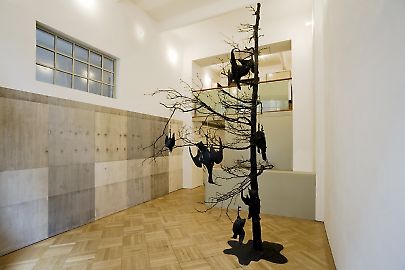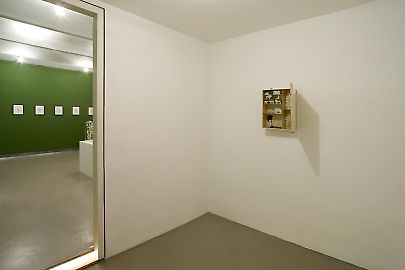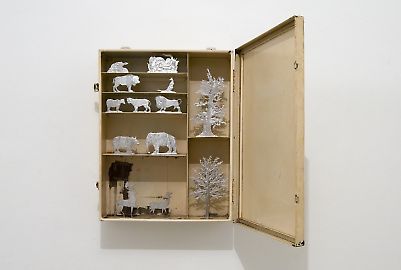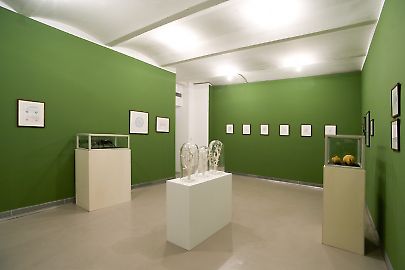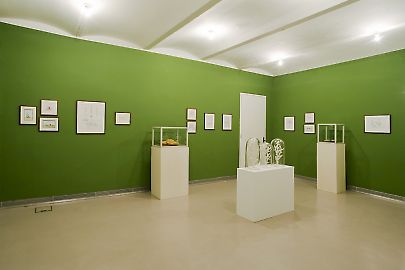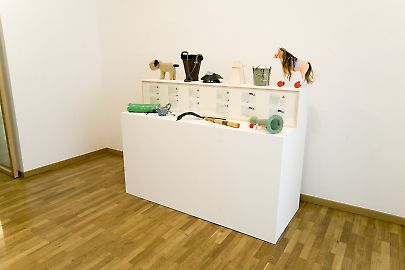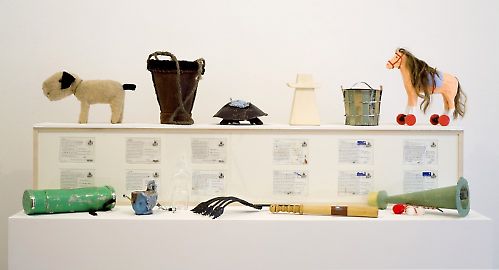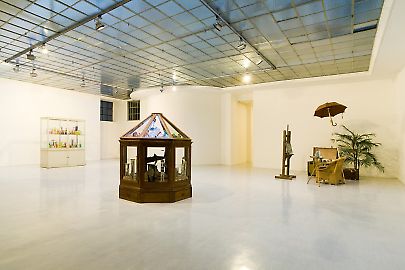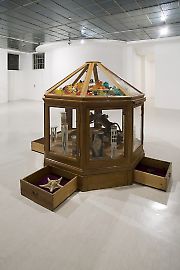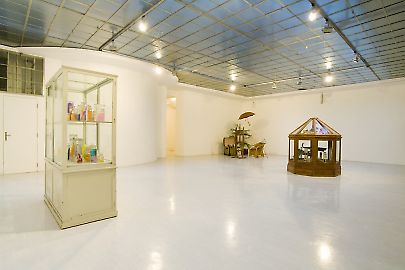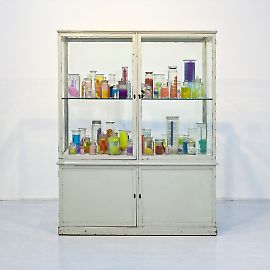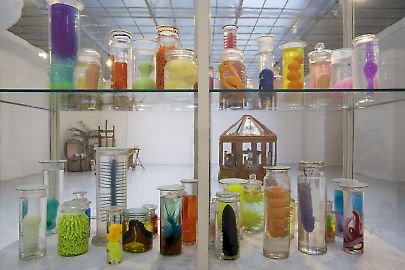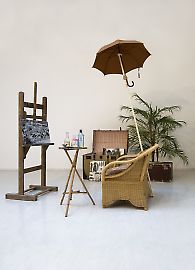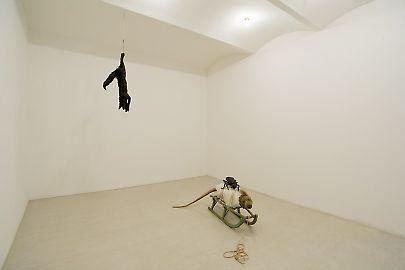Mark Dion -- FRESH SCULPTURE (including collaborations with DANA SHERWOOD)
Standing at the core of Mark Dion's work is a concern with nature and its representation, which he critically analyses as a cultural construction. The artist, born in the US in 1961, is fascinated by differing conceptions of nature, often turning to the historical juncture of the late 17th and early 18th centuries, when the subjective order of cabinets of curiosities was supplanted by the scientific orientation of the museum common today. In realizing his works, Dion takes recourse to methods and techniques from science and archeology: he collects, archives, orders, and compares. Despite their apparent proximity to scientific discourse, however, Mark Dion's installations and ensembles of found pieces and prepared samples precisely do not represent a natural history collection, but are reflections on systems of order and collecting. In essence, the artist always asks how we develop our notion of nature. According to his point of view, the taxonomies we use to explain natural processes reveal more about social and political ideologies than about nature itself. His genuine interest is not so much academic, but rather ecological and political.
Collecting, archiving, and classifying as natural scientific methods transfer artifacts and natural phenomena to new contexts, whereby they on the one hand lose their function in the context of their original emergence, on the other hand being freed for critical reflection.
This part of the exhibition points to the destructive and violent side of the appropriation of nature: "They are not just stuffed animals…but are covered in tar. The mark of violence is quite concrete, a violence the visitors would think nothing about if the animals could be seen posed naturally."[1] A form of beholding nature that in its radicalness makes clear that "what was thought to be observation of life was actually the study of death."[2]
Again and again, Dion in particular questions the forms of representation used in museums of natural history. He understands them as places where scientific findings are presented to a broad public as "truths" of natural phenomena, which do not correspond to the actual course of nature. "To me the museum embodies the 'official story' of a particular way of thinking at a particular time for a particular group of people. It is a time capsule."[3] The Ruins of the Museum emphasizes this subjective aspect of the presentation of collections, and thus the transitory nature of their veracity. In this work a collection of natural products and artifacts is presented in display cabinets familiar from the cabinets of curiosities from the eighteenth century: but here they already show signs of decay and destruction.
The result of Mark Dion's artistic reflections are spatially expansive installations, staged like backdrops, that commonly include site-specific history and culture. Through surprising thematic linkages and an ironic-allegorical power of reflection, Mark Dion analyses the political, economic, and aesthetic forces behind the social representation of nature at the gateway between science and art.
Text: by Linda Klösel
[1] Dieter Buchhart, "Meine Werke sind nicht über Natur, sondern über die Idee von Natur: Interview mit Mark Dion," Kunstforum 157 (2001), pp. 185-197
[2] "Miwon Kwon in Conversation with Mark Dion," in: Dion (1997) d., p. 22.
[3] Ibid., p. 17.



